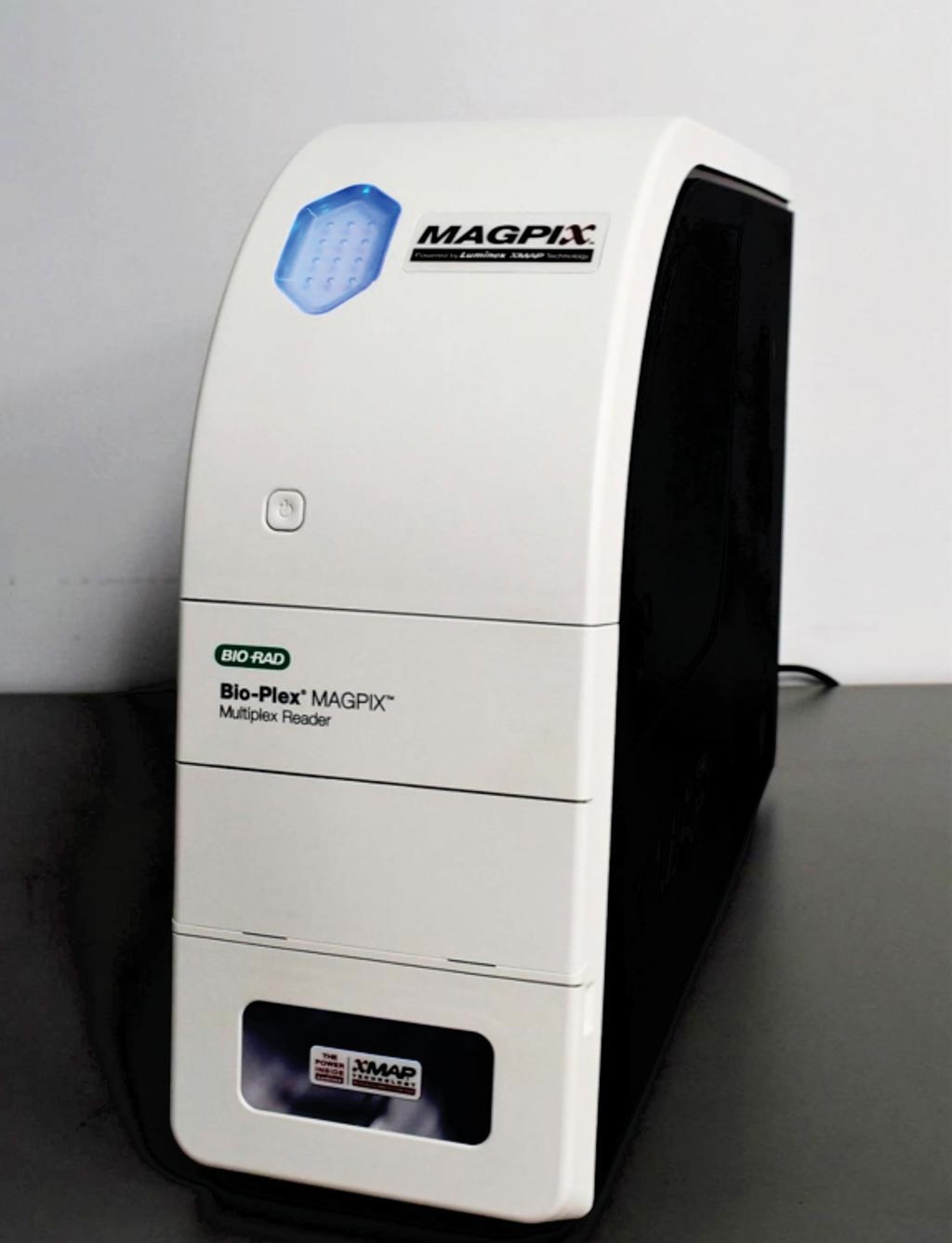Assays Detect Inherited Blood Disorders Associated with Malaria
By LabMedica International staff writers
Posted on 07 Feb 2019
Plasmodium parasites have co-evolved with human hosts and exert a considerable evolutionary pressure on mutations that confer a degree of protection against malaria. Glucose-6-phosphate dehydrogenase deficiency (G6PDd), hemoglobin C (HbC) and S (HbS) are inherited blood disorders (IBD) common in populations in malaria endemic areas.Posted on 07 Feb 2019
All these IBDs are associated to some degree with protection against clinical malaria whilst additionally G6PDd is associated with hemolysis following treatment with 8-aminoquinolines. Measuring the prevalence of these inherited blood disorders in affected populations can improve understanding of disease epidemiology.

Image: The MAGPIX single or multiplex automated immunoassay reader (Photo courtesy of Bio-Rad).
Scientists at the London School of Hygiene & Tropical Medicine (London, UK) and their international colleagues collected blood samples from males aged 18–45 years in Burkina Faso from August 2014 to November 2015 and from males aged over 10 years in The Gambia from December 2015 to April 2016. All participants were screened for glucose-6-phosphate enzyme activity using CareStart G6PD rapid diagnostic test and the Fluorescent Spot Test (FST).
Human DNA from whole blood samples was amplified in a novel, multiplex PCR reaction and extended with SNP-specific probes in an allele specific primer extension (ASPE) to simultaneously detect four epidemiologically important human markers including G6PD SNPs (G202A and A376G) and common hemoglobin mutations (HbS and HbC). The products were hybridized to magnetic beads and the median fluorescence intensity (MFI) was read on MAGPIX. Genotyping data was compared to phenotypical data generated by flow cytometry and to established genotyping methods. Samples were examined on a FACScailbur cytometer.
The team reported that 75/78 samples from Burkina Faso (96.2%) and 58/61 samples from The Gambia (95.1%) had a G6PD and a HBB genotype successfully assigned by the bead-based assay. Flow cytometry data available for 61 samples further supported the concordance between % G6PD normal/deficient cells and genotype. Using the microsphere assay for the four markers, data for 96 samples was available within seven hours at an estimated cost per sample of USD 4.30.
The authors concluded that the microsphere multiplex assay may play a role in addressing the increasing need to test for human and parasite genetic changes because of their impact on disease progression and malaria epidemiology. The multiplex nature of the assay in addition to the fast turn-around time and the relatively low cost, make it attractive for assessment of multiple genetic markers in large-scale epidemiological studies. The study was published on January 21, 2019, in the Malaria Journal.
Related Links:
London School of Hygiene & Tropical Medicine








 (3) (1).png)




